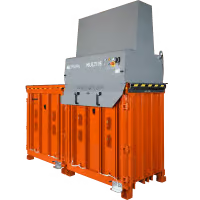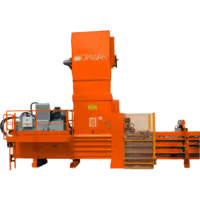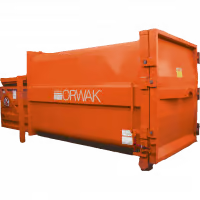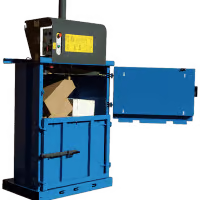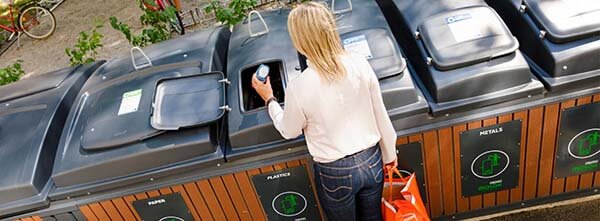HOW TO AVOID LANDFILL TAX THROUGH SEGREGATION
Avoiding Landfill Tax through good practice with Orwak Easi

First introduced on 1 October 1996 to encourage waste producers and the waste management industry to switch to more sustainable alternatives for disposing of waste, the Landfill Tax rises every April in line with the Retail Prices Index (RPI) rounded to the nearest 5 pence.
Landfill Tax is charged on waste disposed at a landfill site. The idea is to minimise the amount of waste produced and the use of non-landfill waste management options, which may include recycling, composting and recovery.
The tax has been hailed as a success in helping to achieve these aims. Since 2000 the amount of waste sent to landfill has dropped by 70%, with the average household recycling rates rising from 18% to 44%. The annual increase is intended to ensure the government continues to meet its environmental objectives.
From 1st April 2017 the Landfill Tax stands at £86.10 per tonne. For businesses that produce a lot of waste, this can add up. However, it’s possible to not only avoid sending waste to landfill, and thereby avoid the tax, it’s increasingly common for businesses to actually generate revenue from their waste through careful management and working with partners who will buy and recycle their waste.
Waste Segregation

When assessing your waste management strategy to identify ways you can reduce your waste-to-landfill, the best place to start is to look at current levels of waste segregation within your operation. By separating recyclable waste such as plastic, cardboard, aluminium, glass and steel from your general waste you can dramatically reduce the amount of waste disposed to landfill.
Under the Environmental Protection Act 1990, waste producers have a Duty of Care to keep records of how waste is handled and disposed. This means that whether you deal with the disposal directly, or pass your waste to a contractor, you are still legally responsible for that waste. Therefore, it’s good practice to document how your waste is treated.
Whether you pay your waste contractor to do this for you, or you do it yourself onsite, you must ensure that your waste is properly controlled and recorded.
Start by reviewing the top of the waste hierarchy in your business. Establish where waste can be reduced or minimised through good housekeeping and more waste-conscious working practices. For example, buying in bulk can keep costs down and reduce the amount of packaging coming into your business.
Investigate if baling your recyclable waste could add a new revenue stream to your business. Materials such as plastic, paper, cardboard, glass and cans may very well have a value. By correctly segregating and baling waste you can make it more attractive to recycling companies.
Baled Waste
Correctly sorted waste, which is baled in standard sizes, will be collected by many recyclers free of charge. And with significant volumes of baled high value waste, you may be able to negotiate a payment from the recycler.
Finally, you should compact the waste that can’t be recycled. This reduces the number of waste collections you will need to pay for. It also takes up far less space and most companies can halve their waste collections using this method, achieving significant savings in the process.

